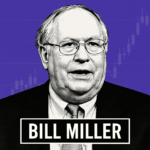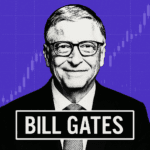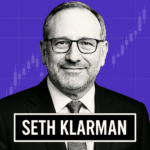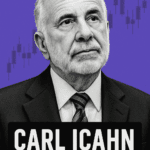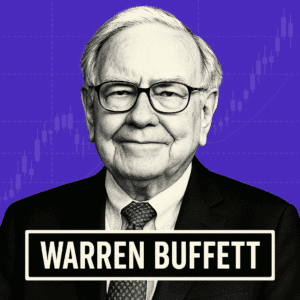
WARREN BUFFETT – BERKSHIRE HATHAWAY Q1 2025 PORTFOLIO
Berkshire Hathaway, a hedge fund managed by Warren Buffett, disclosed 36 security holdings in its Q1 2025 13F filing, with a total portfolio value of $258,701,151,000.
Warren Buffett’s Portfolio
As of Q1 2025, Warren Buffett’s Berkshire Hathaway portfolio shows significant adjustments across several key holdings. The total portfolio value stands at $258.7 billion with 36 positions. Below is a detailed overview of his latest positions and notable changes since Q4 2024.
Top Holdings
Portfolio Strategy Analysis
A notable repositioning occurred as Coca-Cola moved ahead of Bank of America to become the third-largest holding. This shift highlights Buffett’s increasing preference for stable consumer staples over banking in the current economic environment.
The significant reduction in Bank of America shares (7.15% decrease) continues the previous quarter’s trend of trimming financial exposure. This marks approximately 20% reduction over two quarters, suggesting deliberate repositioning rather than minor adjustments.
Both Chevron and Occidental Petroleum saw increased portfolio allocations. Chevron’s percentage rose significantly without additional purchases, indicating price appreciation, while Occidental saw continued incremental buying—reinforcing Buffett’s bullish energy sector outlook.
The increased portfolio allocation to Coca-Cola and maintained position in Kraft Heinz suggests a defensive tilt in the portfolio. These consumer staples companies provide steady dividends and stability amid potential economic volatility anticipated in 2025.
While Apple remains the largest position, its relative size in the portfolio has decreased. This moderation in tech exposure could reflect Buffett’s value-oriented approach amid persistently high tech valuations and ongoing AI-driven market volatility.
Conclusion
Warren Buffett’s Q1 2025 portfolio reveals strategic adjustments that appear to prepare for a shifting economic landscape. The continued reduction in Bank of America, increased emphasis on Coca-Cola, and growing energy sector exposure through Chevron and Occidental Petroleum suggest a more defensive posture.
These moves signal Buffett’s concerns about the banking sector while expressing confidence in consumer staples and energy. The slight moderation in Apple’s portfolio dominance, while maintaining the same number of shares, indicates a balanced approach to tech exposure. Overall, the Q1 2025 portfolio demonstrates Berkshire’s continuing evolution toward stability and value in an uncertain economic environment, while still maintaining significant positions in businesses with durable competitive advantages.
Berkshire Hathaway Portfolio Analysis
Based on 13F filing for reporting period: Q1, 2025
Portfolio Manager
Warren Buffett
Filing Date
May 15, 2025
Total Value
$258,701,151,000
Number of Positions
36
Portfolio Allocation
Holdings Breakdown
| Rank | Company Name | % of Portfolio | Ticker/CUSIP | Shares | Market Value ($) |
|---|
Berkshire Hathaway’s Japanese Expansion
Warren Buffett’s Berkshire Hathaway has made a significant strategic move in Japanese markets, with National Indemnity Company (Berkshire’s subsidiary) increasing positions across all five major Japanese trading companies (sogo shosha) during March 2025. These coordinated increases represent a major vote of confidence in Japan’s economic prospects and the unique business models of these diversified conglomerates.
Key Investment Highlights
Position Changes by Company
Strategic Analysis
Berkshire’s coordinated increases across all five major sogo shosha demonstrate a systematic approach rather than company-specific bets. This suggests Buffett sees fundamental value in the trading company business model itself – diversified conglomerates with global reach, strong cash generation, and attractive dividend yields. The timing of these moves in March 2025 may also reflect Berkshire’s view that Japanese equities remain undervalued relative to global markets.
Several positions now exceed 9%, approaching the 10% threshold that would grant Berkshire board representation under Japanese corporate governance rules. Mitsubishi Corporation (9.67%) and Mitsui & Co (9.82%) are closest to this level. This proximity suggests Berkshire is carefully calibrating its influence while maximizing economic exposure without triggering complex governance obligations.
By investing in the Big Five trading companies, Berkshire gains exposure to virtually every sector of the global economy through a single investment theme. These companies collectively operate in energy, metals, machinery, chemicals, food, real estate, infrastructure, and financial services. This approach provides broad diversification while maintaining the concentrated position sizes that characterize Buffett’s investment style.
The Japanese trading companies serve as natural hedges against inflation and currency fluctuations, given their global commodity exposure and pricing power. With many of their assets and revenues denominated in currencies other than yen, these investments provide Berkshire with geographic and currency diversification. The yen’s weakness in recent years has made these investments even more attractive from a USD perspective.
Investment Implications
Validation of Value Investing in Japan: Berkshire’s sustained commitment to Japanese equities validates the view that Japan offers compelling value opportunities often overlooked by growth-focused global investors. The trading companies trade at significant discounts to their international peers despite similar or superior profitability metrics.
Long-term Structural Play: These investments appear positioned for Japan’s potential economic resurgence, demographic challenges that favor consolidated industry players, and the country’s strategic importance in global supply chains. The trading companies’ transformation into more asset-light, technology-enabled businesses aligns with evolving investor preferences.
Dividend Income Focus: All five companies maintain consistent dividend policies with yields attractive by current market standards. This income generation supports Berkshire’s cash flow needs while providing total return upside through potential multiple expansion as global investors recognize the value in Japanese equities.
Conclusion
Berkshire Hathaway’s systematic increases in Japanese trading company positions represent one of the most significant international investment moves by the Omaha-based conglomerate in recent years. The coordinated nature of these additions – raising all five positions to approximately 9% ownership levels – suggests a strategic thesis rather than opportunistic accumulation.
This commitment to Japanese equities demonstrates Buffett’s continued conviction in value investing principles and his willingness to take concentrated positions in undervalued assets, regardless of geographic location. As these positions approach the governance threshold of 10%, investors will watch closely to see whether Berkshire seeks more active involvement in these companies or maintains its traditional passive approach to public equity investments.
The ultimate success of this strategy will depend on Japan’s economic performance, the yen’s trajectory, and the trading companies’ ability to adapt their business models to changing global trade patterns. However, the scale and coordination of Berkshire’s commitment suggests confidence in the long-term prospects of both Japan and the sogo shosha business model.

